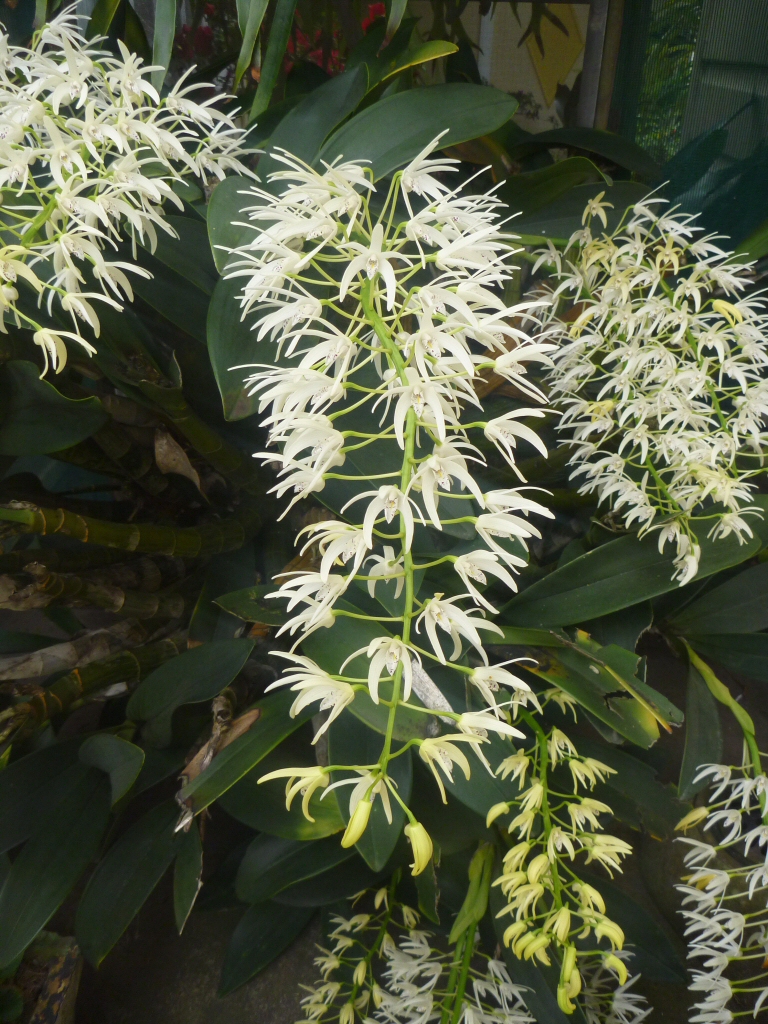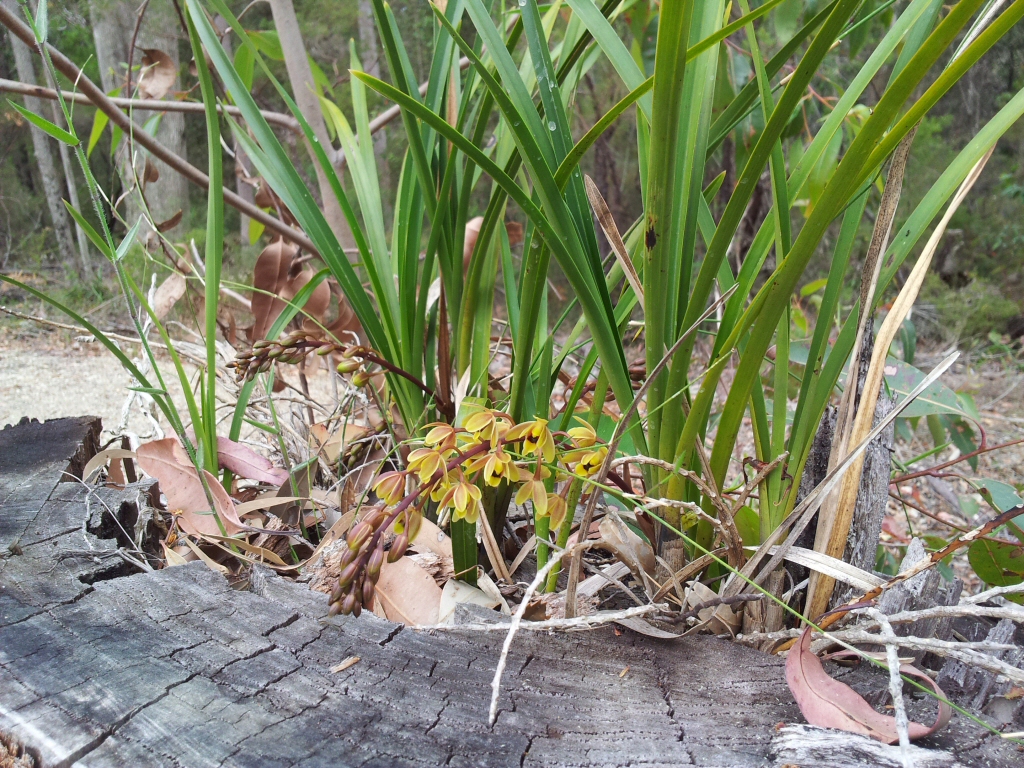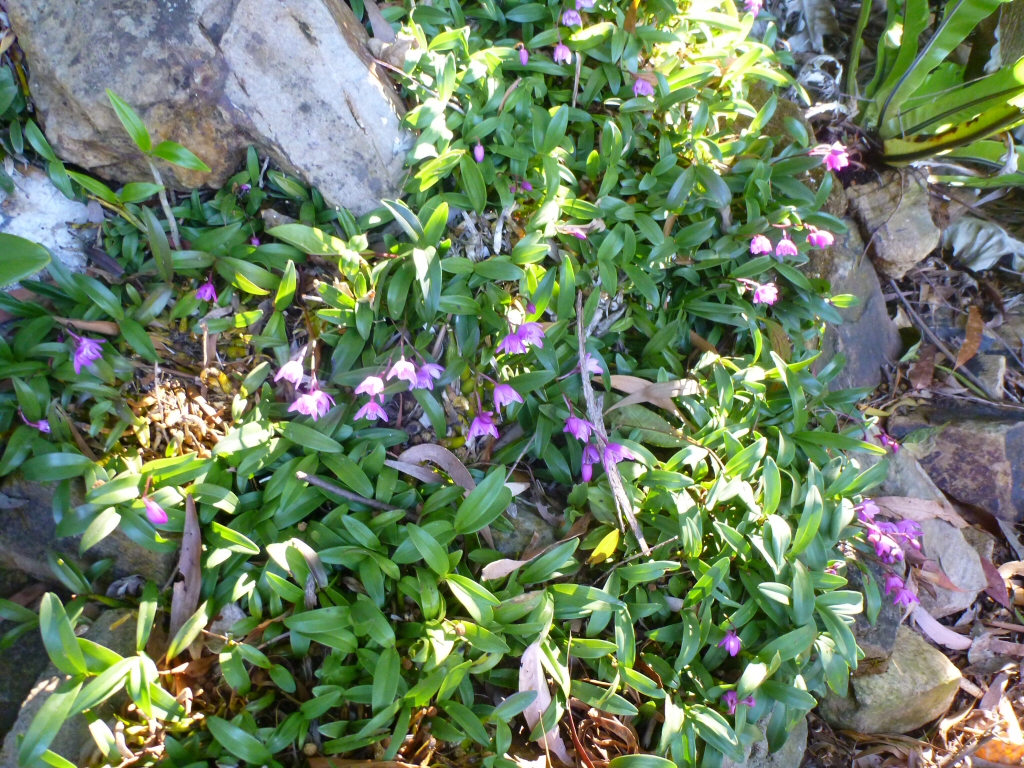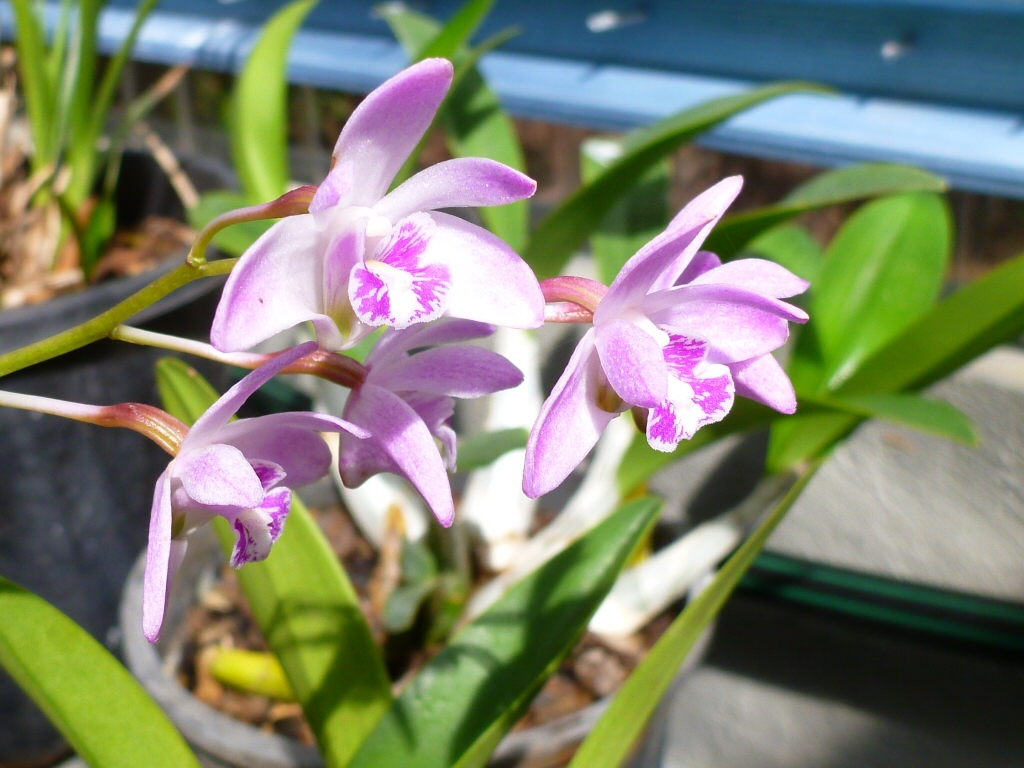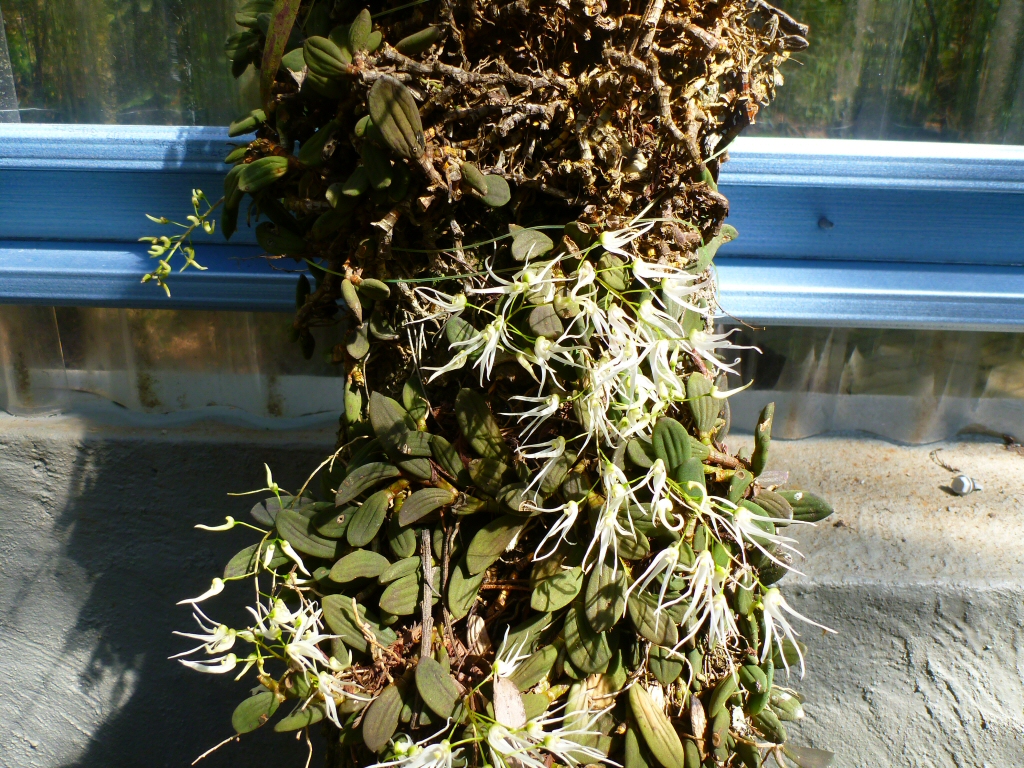Orchids are one of the wonders of the plant world with a staggering diversity of plant and flower types that provide endless fascination and sometimes obsession for gardeners. World-wide there are approximately 30,000 species in 600 odd genera that comprise roughly 10% of all flowering plants with Australia being home to a more than 1200 species in about 100 genera.
Native orchids range from the spectacular epiphytic (growing on trees) such as Cymbidium suave, and lithophytic (growing on rocks) species of the tropical jungles and warmer areas of Australia, to the intricately subtle terrestrial (growing in the ground) species found throughout the dry eucalypts forests throughout the continent.
Generally speaking Australian orchids have smaller, more subtle flowers than their exotic counterparts. Nonetheless the subtleties of form and colour over the range of species has excited many gardeners to collect and breed native orchids with genera such as Dendrobium and Sarcochilus having numerous named hybrids that combine the best features of the wild species.
Which Australian native orchids can I grow in the garden?
Orchid culture can seem somewhat daunting to beginners, however, there are species that are likely to succeed much better than others. It is very important to choose orchids that will suit the conditions you are able to provide as some will grow quite happily under normal garden conditions such as a protected spot amongst trees while orchids of tropical origin will not thrive in cooler areas unless a heated greenhouse can be provided.
The best known Australian orchids in cultivation are undoubtedly the Dendrobium orchids. The spectacular purple flower sprays of the Cooktown orchid (D. bigibbum) provides Queensland with its floral emblem, however, being from the Cape York area limits its potential for outdoor cultivation in southern areas of the continent.
The miniature rock orchid (D. kingianum) and it’s bigger cousin the rock lily (D. speciosum) are both widely grown lithophytes that are easily cultivated under outdoor conditions in all but the coldest climates. In addition there are numerous hybrids that broaden the colour palette for orchid enthusiasts, which are often grown in shadehouses or under trees in temperate to sub tropical areas.
The fairy orchids (Sarcochilus species and hybrids) are aptly named for their delicate sprays of small but usually plentiful flowers with some species being delightfully perfumed as an added bonus. Some species are epiphytic and others lithophytic from a variety of climates so it is important to study the individual requirements of the particular species or hybrids you may wish to cultivate. Some of the hybrid fairy orchids are beautifully patterned in pinks and purples (eg ‘Bobby-Dazzler’ and ‘Velvet’) and oranges (eg ‘Armstrong’) and are well worth the extra effort they require to thrive.
Australia has a rich flora of terrestrial orchids which are generally rather petite but incredibly beautiful. They are also quite particular in their growing requirements and it is essential to study their individual requirements to guarantee success. Many of the native terrestrial orchids rely on relationships with beneficial fungi that inhabit their root systems and unfortunately these fungi are difficult to establish and maintain under garden conditions. An additional complication is that many terrestrial species also have dormancy periods, often in summer after they flower and during this period they can be prone to rotting out.
There are some spectacularly large-flowered species of native orchids such as the swamp orchid (Phaius tankervilleae) with showy white 12cm flowers with the interior being a mixture of crimson and cinnamon brown.
How To Grow Australian Orchids- A Few Tips
After first deciding which type of orchid to grow, the next step is to decide where to grow. You can either choose to keep them in pots, or to naturalise them in the garden. Research how your chosen species grows, and try to copy this as closely as you can. For example- Dendrobium speciosum and kingianum naturally grow on rock shelves and under trees, giving them some drainage, protection from the hottest sun and food from the falling leaf litter and the odd bird droppings. Find a spot close to a shrub, tree or structure, and use some commercial orchid mix, leaf litter and pine bark mulch to plant it into. You can use pots, or get creative with logs or stonework. The plants will bloom on new growth, so if your plants are just surviving and not thriving and flowering, some extra care with watering and some diluted liquid fertiliser will kick the new growth along for the next flowering season.
Epiphytic orchids can be fastened to branch junctures or hollows in trees with some added bark and leaf mould, which will hold nutrients.
Orchids that are both epiphytic and lithophytic such as Dockrillia linguiformis can be fastened to cork slabs. They will need watering daily in warm months, but less watering in winter will be beneficial and can stimulate spring flowering.

